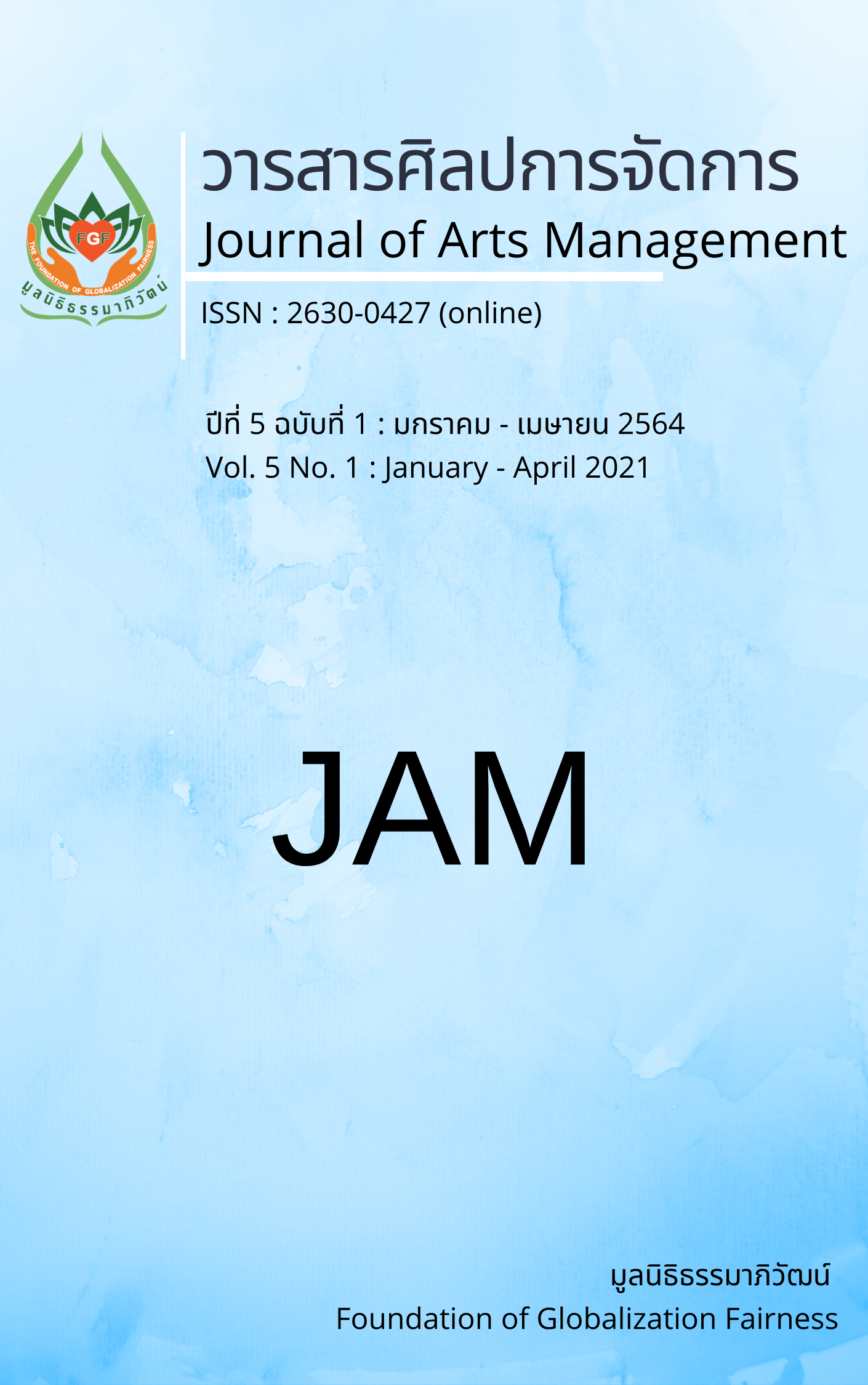Models of integrating supply chains on quality service and results operations of the hotel business in Thailand
Main Article Content
Abstract
The purposes of this study were 1) to analyze the causal effects of integration factors with suppliers and aspects of internal integration with customers on hotel business service quality; (2) to study the impact of service quality in conducting hotel business activities; and (3) to propose a model of integrated supply chain, according to service standards and the performance of the hotel business in Thailand. The population was hotel business executives who are members of the Thai Hotel Association (THA), A sample was selected from 400 business executives were included. Researchers have used multi-stage-sampling methods, and analyzed data using structural equation model analysis techniques (SEM).
The results of the study proved that the integration of suppliers internally and with customers had a direct positive impact on the efficiency of the hotel business. And the performance of the hotel business was indirectly affected by integration with suppliers. Solidarity with customers through internal integration and quality of service was consistent with the established research hypothesis. An index of the integration of supply chain integration models in terms of service quality and performance of the hotel business in Thailand. The model was consistent with empirical data, six indexes that met the acceptance criteria C2 / DF = 1.259, CFI = 0.999, GFI = 0.966, AGFI = 0.941, RMSEA = 0.029, and SRMR = 0.032. It can be concluded that the structural equation modeling model was appropriate. The research data model harmonizes with the changes in the results of the analysis of the harmony index. Overall, after the researchers adjusted the model, it was found that the model was consistent with the practice data. The six indexes that met the acceptance criteria were C2 / DF = 1,2566, CFI = 0.998, GFI = 0.976, AGFI = 0.950, RMSEA = 0.028 and SRMR = 0.023.
Article Details
Views and opinions appearing in articles in the Journal of Arts of Management It is the responsibility of the author of the article. and does not constitute the view and responsibility of the editorial team I agree that the article is copyright of the Arts and Management Journal.
References
กระทรวงการท่องเที่ยวและกีฬา. (2563). สถิติด้านการท่องเที่ยว ปี 2563. สืบค้นจาก https://mots.go.th/more_news_new.php?cid=592
กิตติศักดิ์ เพ็ชรวงษ์. (2556). ปัจจัยที่ส่งผลต่อความจงรักภักดีของผู้เอาประกันภัยรถยนต์ภาคสมัครใจต่อการให้บริการของบริษัทประกันภัยในจังหวัดสุพรรณบุรี (วิทยานิพนธ์บริหารธุรกิจมหาบัณฑิต สาขาวิชาบริหารธุรกิจ). มหาวิทยาลัยเกษตรศาสตร์.
นิตยา พร้าวราม. (2558). แนวทางการพัฒนาคุณภาพการบริการเพื่อรองรับนักท่องเที่ยวกลุ่มอาเซียน: กรณีศึกษาโรงแรมในอำเภอหาดใหญ่ จังหวัดสงขลา (วิทยานิพนธ์บริหารธุรกิจมหาบัณฑิต สาขาวิชาการจัดการการท่องเที่ยว). มหาวิทยาลัยสงขลานครินทร์.
พรลาภ ประโยชน์อมรกุล และศศิธร ง้วนพันธ์. (2557). ปัจจัยที่มีผลต่อความพึงพอใจในการเลือกใช้บริการโรงแรมฮอลิเดย์อินน์รีสอร์ท ภูเก็ต. วารสารการเงิน การลงทุน การตลาดและการบริหารธุรกิจ, 4(2), 309-332.
โยธิน อยู่จงดี. (2555). โรงแรมสีเขียวมาตรฐานไทยหนึ่งในมาตราฐานโลก. สืบค้นจาก http://library.dip.go.th/multim6/edoc/2555/20574.pdf
สมาคมโรงแรมไทย. (2562). Thailand Official Hotels Directory 2018. (ม.ป.ท.)
Aagja, J. P. & Garg, R. (2010). Measuring perceived service quality for public Hospitals (PubHosQual) in the Indian context. International Journal of Pharmaceutical and Healthcare Marketing: IJPHM, 4(1), 60-83.
Battor, M. & Battor, M. (2010). The impact of customer relationship management capability on innovation and performance advantages: Testing a mediated model. Journal of Marketing Management, 26(9-10), 842-857.
Benito, J. G. & Benito, O. G. (2005). Environmental proactivity and business performance: An empirical analysis. Omega, Elsevier, 33(1), 1-15.
Chang, H. H. (2007). Critical factors and benefits in the implementation of customer relationship management. Total Quality Management & Business Excellence, 18(5), 483-508.
Chang, H. H. & Ku, P.W. (2009). Implementation of relationship quality for CRM performance: Acquisition of BPR and organizational learning. Total Quality Management, 20(3), 327-348.
Day, G. S. & Van den Bulte, C. (2002). Superiority in customer relationship management: Consequences for competitive advantage and performance. The Wharton School, University of Pennsylvania.
Dutu, C. & Halmajan, H. (2011). The effect of organizational readiness on CRM and business performance. International Journal of Computers, 1(5), 106-114.
Frejkova, D. (2009). Analysis of the relationships between market orientation, customer relationship management and customer orientation. Retrieved from http://www.google.co.th
Green Leaf Foundation. (2007). Green Leaf Standard for Green Hotel. Retrieved March 10, 2017, from http://www.greenleafthai.org/th/green_standard/
Jain, KK. (2007). Drug Delivery in Central Nervous System Disorders. Basel, Switzerland: Jain Pharma Biotech Publications.
Parasuraman, A., Zeithaml, V. & Berry, L. (1988). SERVQUAL: a multiple-item scale for measuring consumer perceptions of service quality. Journal of Retailing, 64(1), 12-40.
Razalli, M. R., Abdullah, S. & Yusoff, R. Z. (2012). Is halal certification process “Green”. The Asian Journal of Technology Management (AJTM), 5(1), 33-41.
Richard, J. E. (2008) The impact of customer relationship management (CRM) Technology on business-to-business customer relationship (Doctor of Philosophy in Marketing). Victoria University of Wellington.
Sansook, J. (2012). Strategic customer relationship management capabilities and market performance: An empirical study of private Hospitals in Thailand (Doctor of Philosophy in Management). Mahasarakham University.
Shrivastava, P. (1995). Environmental technologies and competitive advantage. Strategic Management Journal, 16, 183-200.
Wu, W. (2002) Customer relationship management (CRM) technology, market orientation, and organizational performance (Master of Science in Administration). Concordia University.


